Backstage Pass: Stage Director Bruce Hostetler reflects on the last 15 months of the rock opera project
Backstage Pass is a series of blog posts spotlighting PHAME’s production of The Poet’s Shadow, on stage at the Hampton Opera Center this August. Follow us backstage to hear the stories behind the opera, interviews with the cast and crew, and more!
This guest post is written by Bruce Hostetler, the stage director for the opera.
Bruce Hostetler, the stage director for The Poet’s Shadow, PHAME’s original rock opera coming to the Hampton Opera Center later this August.
On May 9, 2018, I had a meeting with Jenny about a project PHAME was contemplating: a rock opera written, designed, and performed by PHAME students. In collaboration with Portland Opera, and performing at the Portland Opera black box. It sounded too good to be true. I love music, and stories told onstage with a big, magical brush. As the Artistic Director of the Portland Revels I’m used to working with big casts, and performers with a wide variation of theatre experience. Yeah, sign me up for that rock opera.
It’s been a process of continual creation from that first day in Jenny’s office. First Jenny, Matthew, and I collaborated on what classes PHAME would offer to students to create the designs needed, and how we would take those designs and make them happen on the stage. Then once those processes were in place, we gathered the collaborators, with a focus on finding professional artists who would lift the PHAME students’ work.
We talked about how to best show off the student’s work. Build a stage set? Have a class that built a set? Or is there another way? The early decision to use projections gave us the ability to use the PHAME student work as the base for everything in the visual world of the play. The on-stage world we were creating will have as little in it as possible. A stool for The Rose. Risers for the choir. A place for the iPad ensemble and our guest instrumentalists. And an open stage.
An open stage is not easier - it requires a lighting designer who can create space with light, who can enhance mood and tell a story without sacrificing clarity and clean lines. And, since we have decided use projection screens, we need a lighting designer who can create mood without a cyclorama (a neutral backdrop that can be colored with light). And, since we are putting our scenery up on the screens, we need a projection designer who can create a convincing and detailed space, and still be flexible enough to make changes as the rehearsal process proceeds.
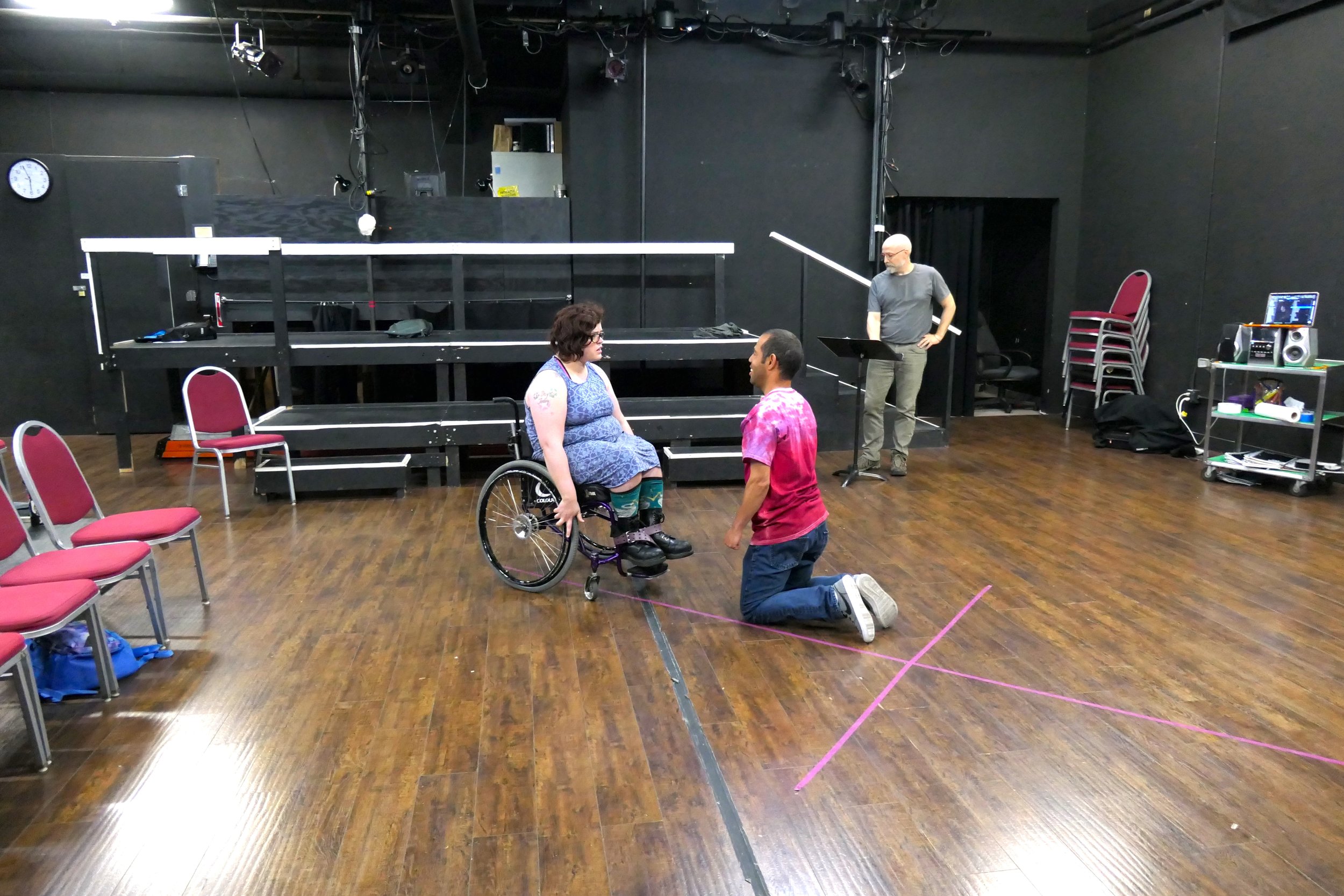

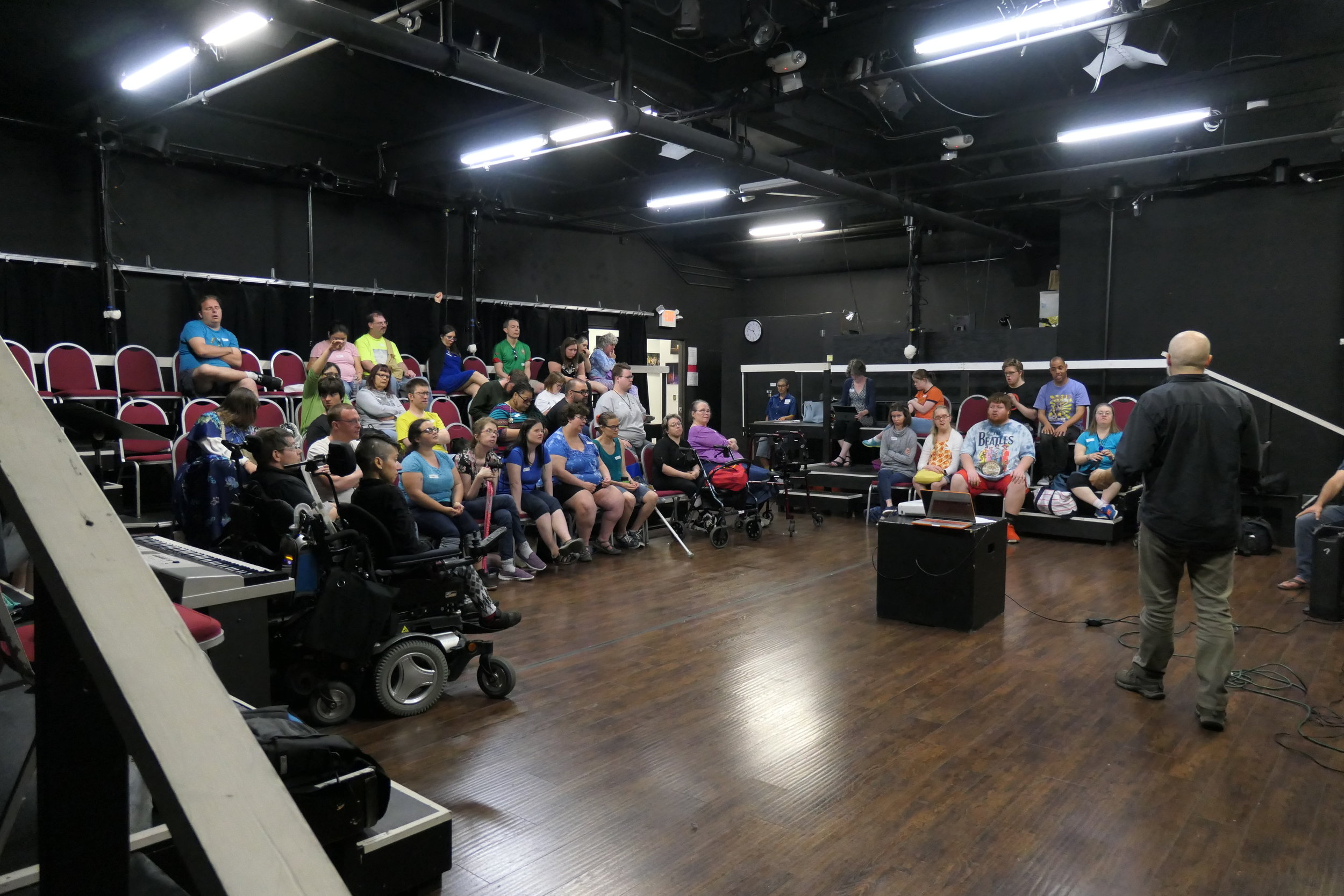
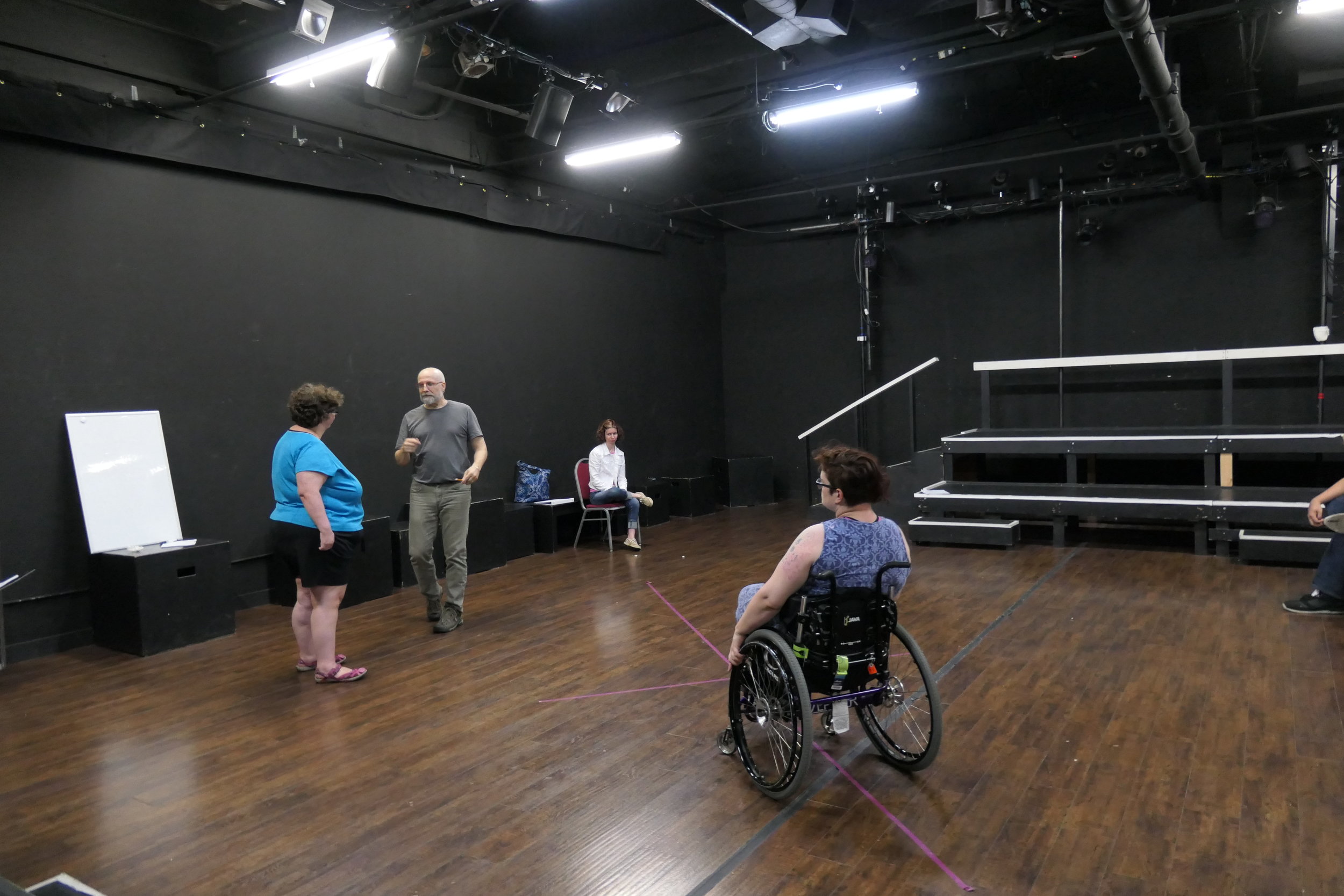
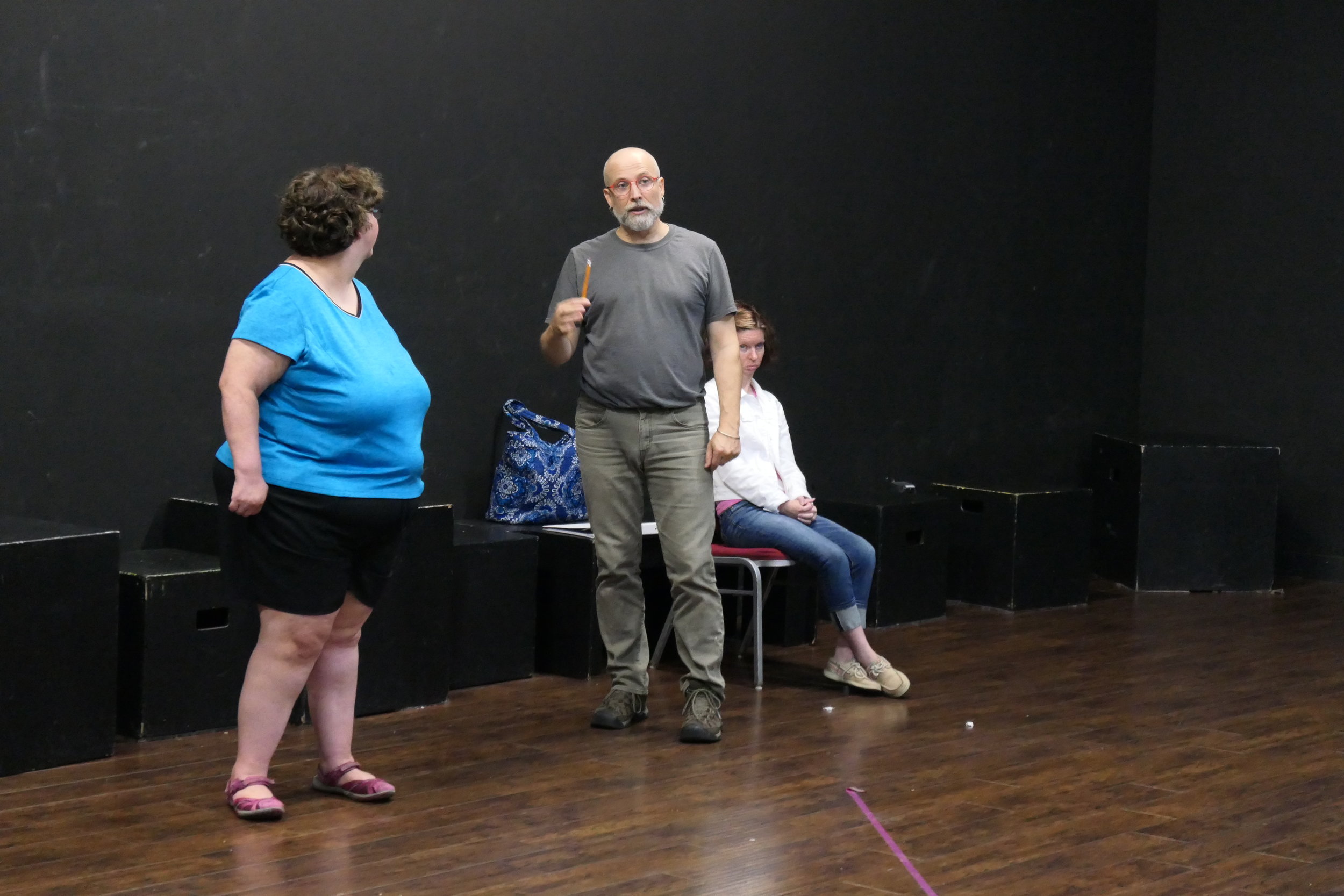
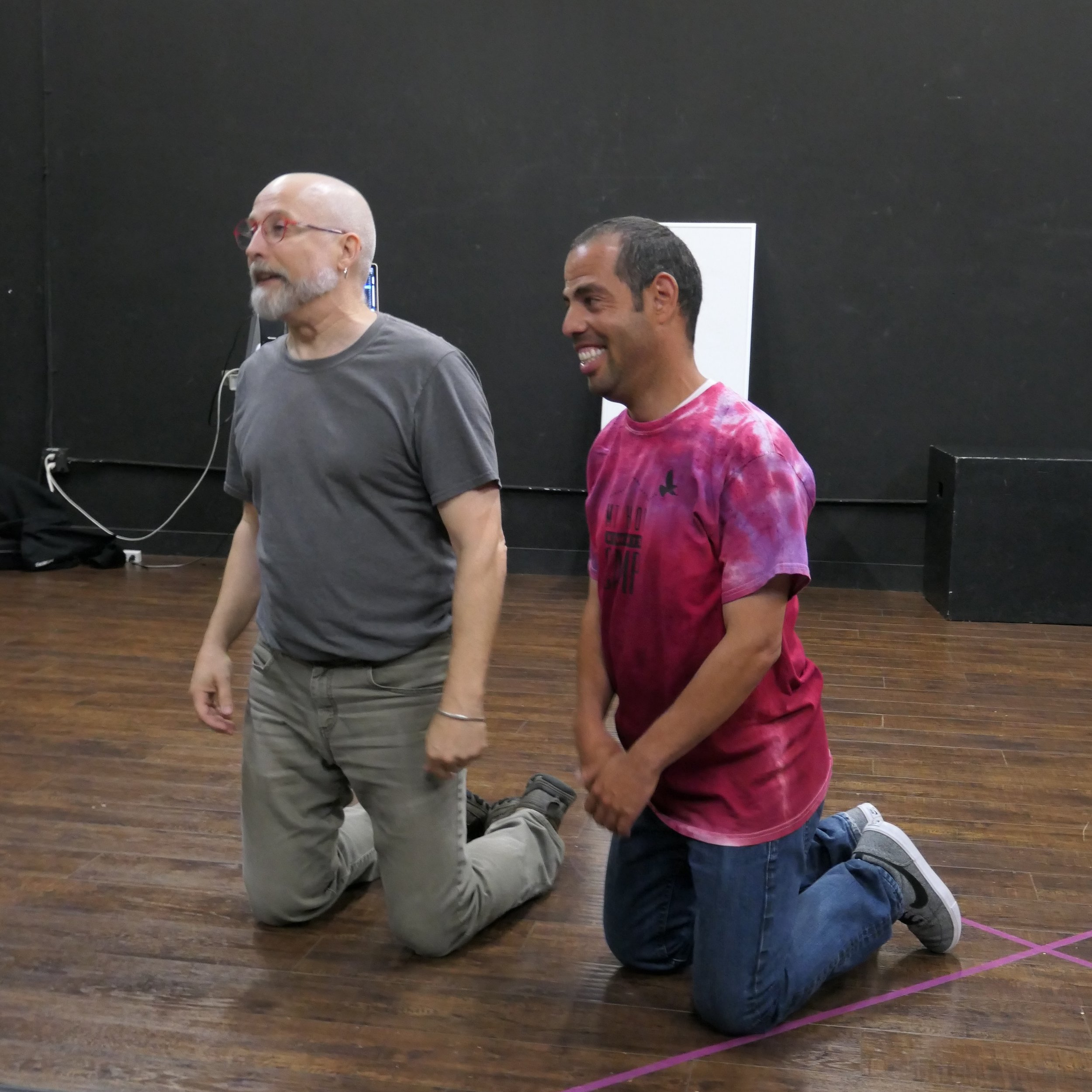
Thinking about how to best use the space at Portland Opera, and allow for as many audience seats as possible, we planned audience on three sides of the action. That arrangement changes the way actors move and stand. In a traditional stage setup, you have a frame (the proscenium) that gives the audience a view of the action from only one side. When the audience is on three sides, there are three frames looking in on the action of the play. And we have to make sure you can follow the action and see the actors from anywhere in the theatre. When you come to the opera, take a look at the X on the floor. That X, running from corner to corner, helps the actors place themselves effectively in the space. You may not see everyone all the time, but no matter where you sit, you always have at least one actor facing your side of the stage. At least we hope so.
The student writers, visual artists, librettists, the professional designers, the PHAME staff, and I have been working for over a year on this project. Ten weeks before the first performance we began to rehearse, and a week before performances begin we will move into the theatre for our final technical and dress rehearsals.
I hope when you come to the opera, you don’t see any of our work. I hope you see a magical story, told with sound and light, instrumentalists and actors, and dynamic visual effects. And I hope you don’t think for a second about all the hard work. That’s the way I want it.
—Bruce

